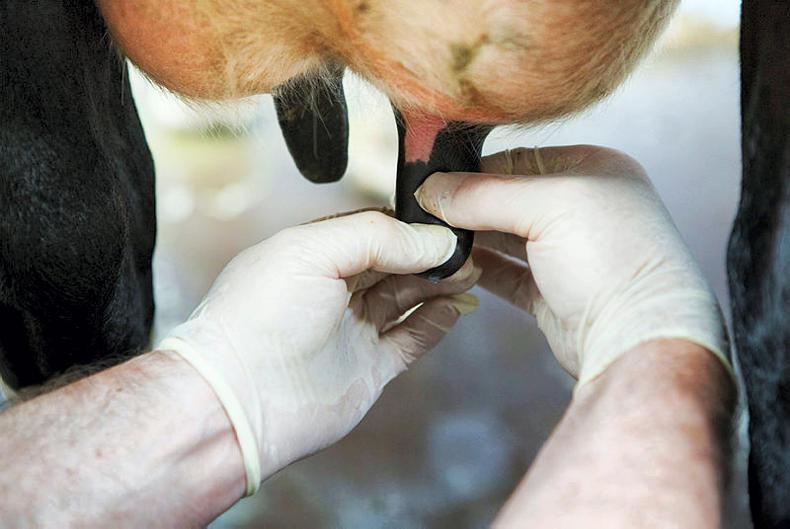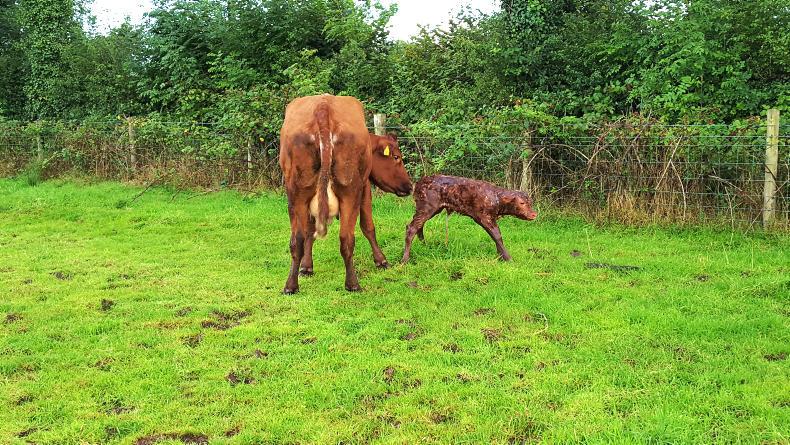Autumn calving is very close now or may even have kicked off for some suckler herds. Within the Teagasc-Irish Farmers Journal BETTER farm beef challenge, there are three autumn-calving systems and two split spring- and autumn-calving farms.
Without doubt, the management of the autumn-calving cow differs significantly from her spring-calving alternative.
Good management in an autumn-calving system focuses on the areas outlined below.
Diet
The biggest challenge with autumn-calving cows is to achieve the correct body condition and to prevent them getting over-fat prior to calving.
Target BCS is 2.5 to 3. In general, they can afford to be in slightly better condition than a spring calver because they will be fit from exercise and more movement compared with a spring calver that is indoors.
Allowing cows to clean off rough pasture as the second grazer in a leader-follower system is a good option. Other than that, strip grazing stemmy covers daily will work well too.
The biggest challenge with autumn-calving cows is to achieve the correct body condition and to prevent them getting over-fat prior to calving
I think the biggest mistake farmers can make with diet pre-calving is trying to cut BCS and over-fat cows late in the gestation.
Excessive restriction should not take place within four weeks of calving as this will negatively affect calf development and the cow’s energy levels during calving.
Do not forget pre-calver minerals.
Lick buckets should be offered or mineral boluses should be administered at least four weeks prior to calving.

Mastitis
Speaking to farmers around the country, flies have been extremely active this year as a result of the weather conditions. Mastitis is a concern both before and after calving.
Over the years, most farmers will have figured out what works best for them in terms of keeping fly strike at bay prior to calving. There is very good success to be had with pour-ons, provided the first application is administered prior to the risk period, and each animal is topped up within the specified time-frame.
Stockholm tar works well too, provided it is kept topped up too.
A lot of farmers are getting good results from the use of garlic licks. Once again, the earlier these are offered to cows the better.
To minimise risk post-calving, see calf management below.
Monitoring and handling
As cows come closer to calving, leaving them with the main group of cows is not recommended from a monitoring point of view.
As cows start to spring up to calve, they should be taken to a field or paddock close to the yard for ease of monitoring and ease of handling if assistance is required.
Always have a clean, disinfected calving pen ready in the yard
Simple things such as having all weeds in this paddock topped will leave cows and calves easier to see.
Always have a clean, disinfected calving pen ready in the yard. No autumn-calving herd will get away without having to bring in a cow pre- or post-calving.
Ideally, you should have a calving camera in this pen too – if a cow is on the point of calving but night-time is near, bring her indoors where she can be watched more easily and attended to, if necessary.

Calf management
After birth, the first step with a newborn calf is to ensure it gets colostrum.
It is likely that the calf will have been born outdoors, so the most you will be able to do is look at the situation from a distance. If in doubt, the cow and calf will have to be brought in and attended to to ensure colostrum is received within two hours following birth.
In terms of moving from the calving paddock to rank, fresh grass you need to be certain that the calf is sucking all four teats and that it is able to drink the cow out every day. How long you have to wait will vary on a case-by-case basis depending on the strength of the calf and the cows milking ability.
An over-supply of milk from fresh grass too soon can result in two things – mastitis in the cow or a scour in the calf.
Perhaps an intermediate paddock should be considered. This could be a half-grazed paddock that no cow has calved in but where a small number of newborn calves and their dams can be held on a bare-medium grass cover.
To see how two of the BETTER farm participants are managing autumn calving, see this week’s Irish Farmers Journal.






 This is a subscriber-only article
This is a subscriber-only article












SHARING OPTIONS: